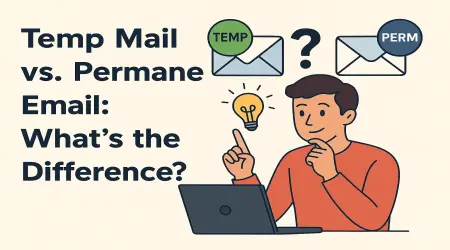

How to Maximize Your Personal Injury Settlement Without Getting Taken Advantage Of
Introduction: The Settlement Game – And How to Win It
Personal injury settlements are high-stakes negotiations where insurance companies hold most of the cards. They have teams of experienced adjusters, lawyers, and investigators whose job is to pay you as little as possible. They know the tactics that work on most people, and they're counting on you not knowing how the game is really played.
But here's what they don't want you to know: You have more power than you think.
This guide reveals the strategies insurance companies use against you and shows you exactly how to turn the tables. You'll learn how to build leverage, avoid common traps, and negotiate from a position of strength. Most importantly, you'll discover how to get the maximum compensation you deserve without falling victim to manipulation or intimidation.
The insurance company's goal is to settle your case quickly and cheaply. Your goal should be to settle it fairly and strategically.
PART I: UNDERSTANDING THE BATTLEFIELD
The Insurance Company Playbook: What They Don't Want You to Know
Their Primary Objectives
- Minimize payouts at all costs
- Close cases quickly before full damages are known
- Shift blame to you or other parties
- Undervalue your claim through various tactics
- Pressure you into settling before you get legal help
Common Insurance Company Tactics
- Quick settlement offers: Low-ball offers made within days of your accident
- Friendly adjuster approach: Acting like they're on your side while gathering ammunition
- Delay tactics: Dragging out the process to pressure you financially
- Medical record fishing expeditions: Requesting excessive medical records to find pre-existing conditions
- Surveillance: Following you to catch activities that contradict your claimed injuries
- Statute of limitations pressure: Waiting until near deadlines to force rushed decisions
The Real Value of Your Claim
Economic Damages (The Visible Costs)
- Medical expenses: Past, current, and reasonably anticipated future costs
- Lost wages: Time off work and reduced earning capacity
- Property damage: Vehicle repairs, personal items, etc.
- Out-of-pocket expenses: Transportation to appointments, home modifications, etc.
Non-Economic Damages (The Hidden Value)
- Pain and suffering: Often 2-5 times your economic damages
- Emotional distress: Anxiety, depression, PTSD, and other psychological impacts
- Loss of enjoyment of life: Activities and experiences you can no longer enjoy
- Loss of consortium: Impact on relationships with spouse and family
- Disfigurement and scarring: Permanent changes to your appearance
Factors That Increase Settlement Value
- Clear liability: The other party is obviously at fault
- Severe injuries: Significant medical treatment and lasting impacts
- Strong documentation: Comprehensive evidence supporting your claim
- Credible presentation: Consistent, honest reporting of your injuries
- Professional representation: Experienced attorney handling negotiations
- Trial readiness: Willingness and ability to go to court if necessary
PART II: BUILDING YOUR FORTRESS – CREATING MAXIMUM LEVERAGE
Strategy 1: Master the Art of Documentation
Create an Unshakeable Evidence Foundation
Your documentation is your ammunition. The more thorough and organized your evidence, the stronger your negotiating position.
Essential Documentation Checklist:
- Medical records: Every doctor visit, test result, and treatment note
- Photographs: Accident scene, injuries, property damage, and recovery progression
- Financial records: Medical bills, pay stubs, tax returns showing lost income
- Daily pain journal: Detailed accounts of how injuries affect your life
- Witness statements: Contact information and accounts from people who saw the accident
- Expert reports: Medical professionals explaining your injuries and prognosis
The Power of Professional Medical Documentation
- Get comprehensive evaluations from qualified specialists
- Request detailed reports that explain how your injuries affect your daily life
- Document future medical needs including potential surgeries or ongoing treatment
- Obtain disability ratings from appropriate medical professionals
- Secure independent medical examinations if the insurance company's doctor contradicts your treating physicians
Strategy 2: Control the Information Flow
What to Share (And When)
Early in the Process:
- Basic facts about the accident
- Initial medical treatment records
- Clear photographs of property damage and initial injuries
Later in Negotiations:
- Comprehensive medical records and reports
- Complete financial impact documentation
- Expert witness reports and opinions
- Future medical cost projections
What Never to Share
- Unrelated medical records from years before the accident
- Personal financial information beyond what's directly relevant
- Social media posts or personal photos
- Speculative statements about fault or causation
- Settlement expectations or your "bottom line" number
Managing Insurance Company Requests
When they ask for:
- Recorded statements: "I prefer to communicate in writing"
- Medical authorizations: "I'll provide specific records relevant to this claim"
- Tax returns: "I'll provide wage statements and employment records"
- Social media access: "That's not relevant to my accident injuries"
Strategy 3: Time Your Moves Strategically
The Waiting Game: When Patience Pays
Don't rush to settle until:
- You've reached maximum medical improvement (MMI)
- You understand the full scope of your injuries and their long-term impact
- You've completed recommended treatments or have a clear treatment plan
- You have comprehensive documentation of all damages
- You've researched comparable settlements in your area
Creating Urgency for the Insurance Company
- Document deadlines (statute of limitations, policy limits, etc.)
- Demonstrate trial readiness by filing a lawsuit if necessary
- Show alternative options (other insurance policies, additional defendants)
- Highlight ongoing damage accumulation (increasing medical bills, continued lost wages)
PART III: NEGOTIATION MASTERY – PLAYING TO WIN
Strategy 4: Calculate Your True Settlement Value
The Settlement Range Formula
Minimum Settlement = Economic Damages × 1.5 Target Settlement = Economic Damages × 3-5 (depending on injury severity) Maximum Potential = What a jury might award at trial
Example Calculation:
Economic Damages: $25,000 (medical bills + lost wages)
Pain and Suffering Multiplier: 4x (significant ongoing issues)
Total Damages: $125,000
Settlement Range: $100,000 - $150,000
Factors That Increase Your Multiplier
- Permanent injuries or disabilities
- Clear liability by the other party
- Severe impact on daily life and activities
- Strong medical documentation supporting your claims
- Sympathetic circumstances that would resonate with a jury
- Professional legal representation
Strategy 5: Master the Negotiation Process
Phase 1: Initial Demand
Your Opening Move Should:
- Start high but within reasonable bounds (research comparable cases)
- Include comprehensive documentation supporting every dollar claimed
- Tell your story in a compelling, factual narrative
- Set expectations for serious, good-faith negotiations
- Establish deadlines for response and resolution
Sample Demand Letter Structure:
- Executive Summary: Brief overview of accident and injuries
- Liability Analysis: Clear explanation of why their insured is at fault
- Injury Description: Detailed account of physical and emotional injuries
- Medical Treatment: Comprehensive review of all treatment received
- Impact Statement: How injuries have affected your life and future
- Damages Calculation: Itemized breakdown of all economic and non-economic losses
- Settlement Demand: Specific dollar amount with justification
- Response Deadline: Reasonable timeframe for their response
Phase 2: Negotiation Dance
Expect These Moves from Insurance:
- Lowball counteroffer (often 10-25% of your demand)
- Challenges to liability ("Our insured wasn't at fault")
- Disputes about causation ("Your injuries weren't from this accident")
- Questioning medical treatment ("This treatment was excessive")
- Delays and stall tactics ("We need more time to investigate")
Your Counter-Strategies:
- Don't take the first offer personally – it's just their opening move
- Respond with facts and evidence to every challenge
- Make strategic concessions that don't hurt your core position
- Keep detailed records of all offers and counteroffers
- Set firm deadlines and be prepared to enforce them
Phase 3: Final Resolution
Warning Signs of a Fair Offer:
- Addresses most of your economic damages plus reasonable pain and suffering
- Reflects the strength of your evidence and likelihood of trial success
- Considers comparable settlements in your jurisdiction
- Accounts for future medical needs and ongoing impacts
- Represents significant movement from their initial position
Strategy 6: Avoid Settlement Traps
Red Flag Offers
Be Extremely Cautious If They:
- Rush you to decide ("This offer expires tomorrow")
- Demand broad releases covering unrelated claims
- Refuse to put offers in writing
- Ask you to sign before consulting an attorney
- Pressure you to accept during emotional vulnerability
- Offer structured settlements you don't fully understand
Common Settlement Tricks
- The "Take It or Leave It" Bluff: They almost always have authority to pay more
- The "Final Offer" Fiction: Usually followed by higher offers when you stand firm
- The "Policy Limits" Claim: May be true, but verify through discovery
- The "Litigation Will Cost You" Threat: Your attorney can explain if this makes sense
- The "Quick Cash" Temptation: Fast money now vs. fair money later
PART IV: ADVANCED TACTICS – GAINING THE UPPER HAND
Strategy 7: Build Multiple Pressure Points
Identify All Potential Sources of Recovery
Primary Insurance Coverage:
- Liability insurance of the at-fault party
- Your own uninsured/underinsured motorist coverage
- Medical payments coverage from any applicable policies
Additional Recovery Sources:
- Employer liability if the at-fault party was working
- Property owner responsibility if dangerous conditions contributed
- Product liability if defective equipment was involved
- Government liability for dangerous road conditions
Creating Competition Among Insurers
When multiple insurance policies apply:
- Notify all relevant insurers of your claim
- Let them coordinate primary vs. excess coverage responsibilities
- Use their disputes to your advantage in negotiations
- Consider settling with one to create pressure on others
Strategy 8: The Power of Professional Representation
When You Absolutely Need an Attorney
- Serious injuries requiring significant medical treatment
- Disputed liability where fault is being contested
- Multiple parties involved in the accident
- Insurance bad faith tactics or unreasonable settlement offers
- Complex damages including future medical needs or lost earning capacity
Choosing the Right Attorney
Look for lawyers who:
- Specialize in personal injury with experience in your type of case
- Have trial experience and aren't afraid to go to court
- Communicate clearly and keep you informed throughout the process
- Work on contingency so their interests align with yours
- Have resources to properly investigate and present your case
Working Effectively with Your Attorney
- Be completely honest about your injuries, pre-existing conditions, and the accident
- Follow medical advice and attend all scheduled treatments
- Communicate changes in your condition or circumstances promptly
- Provide requested documentation quickly and completely
- Trust their strategy but ask questions if you don't understand something
Strategy 9: Leveraging the Threat of Litigation
When to File a Lawsuit
Consider litigation if:
- Settlement negotiations stall without reasonable progress
- The statute of limitations is approaching
- Insurance companies refuse to engage in good faith negotiations
- Discovery is needed to obtain crucial evidence
- The case value justifies the additional time and expense
How Litigation Changes the Game
Benefits of Filing Suit:
- Access to discovery: Force disclosure of documents and testimony
- Increased pressure: Higher stakes motivate better settlement offers
- Professional evaluation: Judge and jury determine fair compensation
- Statutory interest: Potential for additional damages and attorney fees
Drawbacks to Consider:
- Increased costs: Court fees, expert witnesses, depositions
- Time commitment: Cases can take 1-3 years to resolve
- Public record: Court filings become accessible to the public
- Uncertain outcome: Juries can be unpredictable
PART V: CLOSING THE DEAL – SECURING YOUR VICTORY
Strategy 10: Master the Final Negotiations
Recognizing Settlement Sweet Spots
Ideal Settlement Timing:
- You've reached maximum medical improvement
- All treatment is complete or future needs are clearly defined
- You have strong documentation supporting your claimed damages
- The insurance company has thoroughly investigated your claim
- Discovery has revealed any additional evidence supporting your case
Final Negotiation Techniques
Effective Closing Strategies:
- The reasonable range approach: "Based on comparable cases, fair compensation falls between X and Y"
- The trial comparison: "A jury would likely award more than this offer"
- The finality incentive: "This amount would resolve everything today"
- The relationship preservation: "Let's find a number that works for everyone"
Negotiating Settlement Terms Beyond Money
Important Non-Monetary Terms:
- Confidentiality agreements: Do you want privacy or the ability to discuss your case?
- Payment timing: Lump sum vs. structured payments
- Medical lien resolution: How will outstanding medical bills be handled?
- Tax considerations: Understanding tax implications of your settlement
- Future medical coverage: Protection for ongoing treatment needs
Strategy 11: Protecting Yourself During Settlement
Settlement Document Review
Critical Elements to Verify:
- Settlement amount matches what was agreed upon
- Payment method and timing are clearly specified
- Release language doesn't cover claims beyond this accident
- Medical lien provisions protect you from unexpected bills
- Confidentiality terms are acceptable to you
Common Settlement Document Traps
Watch Out For:
- Overly broad releases that waive unrelated claims
- Future injury waivers that could affect ongoing treatment
- Indemnification clauses that could make you responsible for their costs
- Incomplete lien resolution leaving you vulnerable to medical providers
- Tax responsibility shifts that could increase your tax burden
Strategy 12: Post-Settlement Protection
Immediate Post-Settlement Tasks
- Deposit settlement funds in a separate account initially
- Notify medical providers about lien resolution plans
- Pay outstanding bills according to settlement agreement
- Consult with tax professional about potential tax implications
- Update insurance policies if needed based on the resolution
Long-Term Considerations
Protecting Your Future:
- Keep settlement documents in a safe, accessible location
- Monitor for tax documents (1099s) from the insurance company
- Maintain medical records for ongoing treatment needs
- Consider disability insurance if your injuries created ongoing risks
- Update estate planning documents to reflect changed circumstances
PART VI: SPECIAL SITUATIONS AND ADVANCED STRATEGIES
Dealing with Insurance Bad Faith
Recognizing Bad Faith Tactics
Red Flags Include:
- Unreasonable settlement offers far below documented damages
- Excessive delays in responding to legitimate demands
- Misrepresentation of policy language or coverage
- Failure to investigate your claim thoroughly
- Demanding unnecessary documentation repeatedly
Your Response to Bad Faith
- Document everything including dates, times, and participants in all communications
- Send formal demand letters setting clear deadlines for response
- Consider bad faith claims which can result in punitive damages
- File complaints with your state insurance commissioner
- Seek legal counsel experienced in insurance bad faith litigation
Maximizing Multi-Vehicle Accident Claims
Identifying All Potential Defendants
Look Beyond the Obviously At-Fault Driver:
- Other vehicle operators who may have contributed to the accident
- Employers of drivers who were working at the time
- Vehicle owners if different from the driver
- Government entities responsible for dangerous road conditions
- Manufacturers if vehicle defects contributed to the accident
Strategic Settlement Considerations
- Coordinate claims to maximize total recovery
- Understand policy limits for each potential source
- Consider joint settlement agreements that allocate fault appropriately
- Preserve rights against all parties during partial settlements
Handling Pre-Existing Condition Challenges
The "Eggshell Plaintiff" Rule
You can recover for aggravation of pre-existing conditions if the accident made them worse. The key is distinguishing between:
- Baseline condition before the accident
- Aggravation or acceleration caused by the accident
- Natural progression that would have occurred anyway
Strategies for Pre-Existing Conditions
- Get expert medical testimony explaining how the accident worsened your condition
- Document functional improvements you had achieved before the accident
- Compare before and after activity levels and capabilities
- Obtain records showing successful management of pre-existing conditions
- Focus on marginal impact: Even small worsening can justify compensation
PART VII: YOUR ACTION PLAN FOR MAXIMUM SETTLEMENT
Phase 1: Foundation Building (Months 1-3)
Your Priorities:
- [ ] Secure comprehensive medical documentation of all injuries
- [ ] Gather complete accident evidence including photos and witness statements
- [ ] Begin detailed documentation of how injuries affect your daily life
- [ ] Research comparable settlements in your jurisdiction for similar injuries
- [ ] Evaluate need for legal representation based on case complexity
Key Milestones:
- Medical treatment plan established
- All evidence from accident scene collected
- Initial medical records organized
- Preliminary case evaluation completed
Phase 2: Strategy Development (Months 3-6)
Your Priorities:
- [ ] Calculate realistic settlement range based on documented damages
- [ ] Identify all potential sources of insurance coverage
- [ ] Prepare comprehensive demand package with supporting documentation
- [ ] Establish negotiation timeline with clear deadlines
- [ ] Build trial readiness to strengthen negotiating position
Key Milestones:
- Maximum medical improvement reached
- Complete damage documentation assembled
- Professional legal counsel retained (if needed)
- Settlement demand letter prepared
Phase 3: Active Negotiations (Months 6-12)
Your Priorities:
- [ ] Present initial settlement demand with comprehensive documentation
- [ ] Engage in strategic negotiations responding to counteroffers appropriately
- [ ] Maintain leverage through trial preparation and deadline enforcement
- [ ] Evaluate settlement offers against trial potential and legal costs
- [ ] Finalize settlement terms protecting your interests in all respects
Key Milestones:
- Initial demand presented to insurance company
- Negotiation exchanges completed
- Settlement agreement reached
- Final documentation executed
Phase 4: Settlement Execution (Month 12+)
Your Priorities:
- [ ] Review settlement documents carefully before signing
- [ ] Coordinate medical lien resolution to protect against future claims
- [ ] Receive settlement funds according to agreed timeline
- [ ] Address tax implications with professional guidance
- [ ] Plan for ongoing medical needs not covered by settlement
Key Milestones:
- Settlement documents executed
- Medical liens resolved
- Settlement funds received
- Case officially closed
MAXIMIZING YOUR LEVERAGE: A TACTICAL SUMMARY
The Psychology of Settlement Negotiations
What Insurance Companies Fear Most
- Sympathetic plaintiffs who will resonate with juries
- Clear liability cases they can't dispute
- Significant damages that justify large verdicts
- Experienced attorneys who know how to try cases
- Trial-ready cases with comprehensive evidence
- Deadline pressure from statutes of limitations
- Bad faith exposure that could result in punitive damages
Using These Fears to Your Advantage
- Present yourself professionally and credibly in all interactions
- Build an unshakeable liability case with comprehensive evidence
- Document extensive damages that would shock a jury
- Work with experienced counsel who have trial credibility
- Prepare thoroughly for trial even if you prefer to settle
- Use deadlines strategically to create urgency for resolution
- Identify potential bad faith issues that create additional liability
Your Settlement Negotiation Mindset
Think Like a Winner
Successful settlement negotiators:
- Know their case value and won't accept less than fair compensation
- Control the information flow sharing strategically and purposefully
- Use time as a weapon settling when timing favors their position
- Build multiple pressure points creating urgency for the other side
- Negotiate from strength backed by solid evidence and legal support
- Stay focused on the goal of fair compensation, not quick resolution
Avoid Victim Mentality
Don't let insurance companies:
- Make you feel grateful for any offer they present
- Pressure you into quick decisions before you understand your options
- Intimidate you with legal threats or complex procedures
- Make you feel like settlement is your only choice
- **Convince you that their offer is "standard" or "typical"
CONCLUSION: YOUR SETTLEMENT SUCCESS BLUEPRINT
The Truth About Personal Injury Settlements
Personal injury settlements aren't about luck or sympathy – they're about preparation, strategy, and leverage. Insurance companies count on accident victims being overwhelmed, uninformed, and eager to settle quickly. They use sophisticated tactics developed over decades to minimize payouts and protect their profits.
But when you understand their playbook and follow a strategic approach, you can level the playing field and secure the compensation you truly deserve.
Your Keys to Settlement Success
Foundation: Comprehensive documentation and medical evidence Strategy: Calculate true case value and negotiate from strength
Leverage: Build multiple pressure points and maintain trial readiness Patience: Wait for optimal timing rather than accepting quick offers Professional Support: Work with experienced legal counsel when needed Protection: Avoid settlement traps and secure favorable terms
Remember Your Worth
You didn't ask to be injured. You didn't choose to have your life disrupted, your health compromised, or your financial security threatened. The settlement you receive should reflect the true cost of what you've endured and what you'll continue to face.
Don't let anyone – insurance adjusters, defense lawyers, or even well-meaning friends – convince you to accept less than fair compensation.
Your Settlement Is Not Just About Money
A fair settlement does more than pay your bills:
- Validates your suffering and acknowledges what you've been through
- Provides security for ongoing medical needs and future challenges
- Holds wrongdoers accountable for their actions and negligence
- Gives you peace of mind to focus on recovery and moving forward
- Ensures justice in a system designed to protect corporate interests
The Path Forward
Armed with the strategies in this guide, you're no longer at the mercy of insurance company tactics. You understand how the system works, what your case is worth, and how to negotiate from a position of strength.
Remember:
- You have more power than they want you to believe
- Your case is worth more than their first (or second, or third) offer
- Time often works in your favor when you're properly prepared
- Professional help is available when cases become complex
- Justice is achievable for those who fight for it strategically
Take Action Today
Don't let another day pass without taking steps to protect and maximize your settlement:
- Assess where you are in the settlement process
- Identify gaps in your documentation or strategy
- Calculate your true case value using the formulas in this guide
- Develop your negotiation timeline with clear milestones
- Consider professional representation if your case warrants it
Your settlement success starts with a single decision: to stop being a victim and start being a strategic negotiator.
You deserve fair compensation. Now you know how to get it.
RESOURCE CENTER: Tools for Your Success
Settlement Calculators and Worksheets
- Economic Damages Calculator: Track all out-of-pocket costs
- Pain and Suffering Multiplier Guide: Determine appropriate multipliers for your injuries
- Settlement Range Worksheet: Calculate minimum, target, and maximum settlement values
- Negotiation Timeline Template: Plan your settlement strategy with key milestones
Research Resources
- Jury Verdict Databases: Research comparable awards in your jurisdiction
- Insurance Company Ratings: Understand the settlement practices of different insurers
- Attorney Directory: Find qualified personal injury lawyers in your area
- Medical Expert Networks: Locate specialists who can support your case
Documentation Templates
- Settlement Demand Letter Format: Professional template for presenting your case
- Medical Records Organization System: Keep critical documents accessible
- Pain and Suffering Journal: Daily tracking template for ongoing symptoms
- Settlement Negotiation Log: Record all offers, counteroffers, and communications
Disclaimer: This guide provides general information about personal injury settlement negotiations and should not be considered legal advice. Settlement laws and practices vary by state, and every case is unique. Consult with a qualified personal injury attorney in your jurisdiction for advice specific to your situation. Remember that while this guide provides valuable insights and strategies, there are no guarantees in legal proceedings, and outcomes will depend on the specific facts and circumstances of your case.










